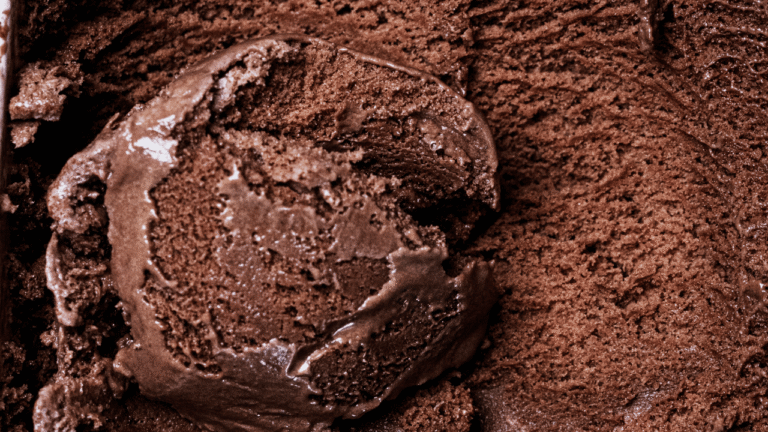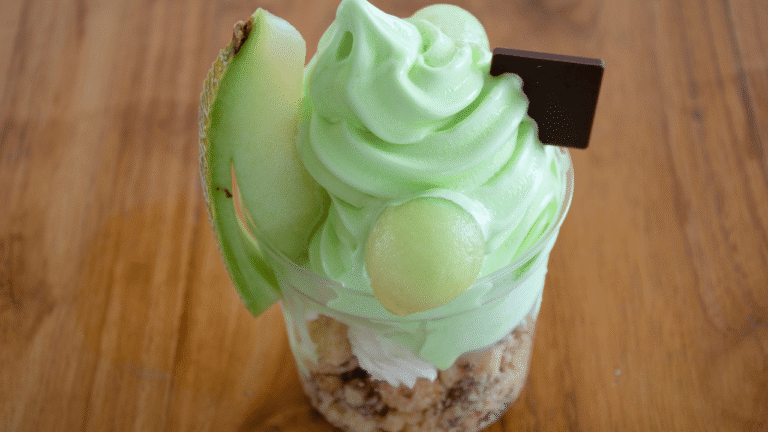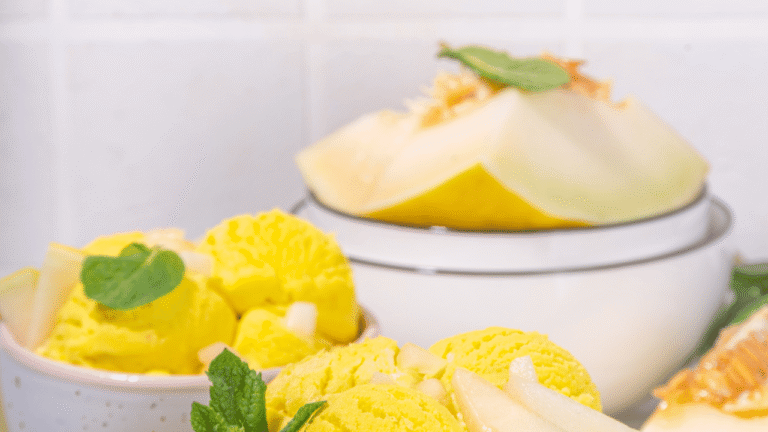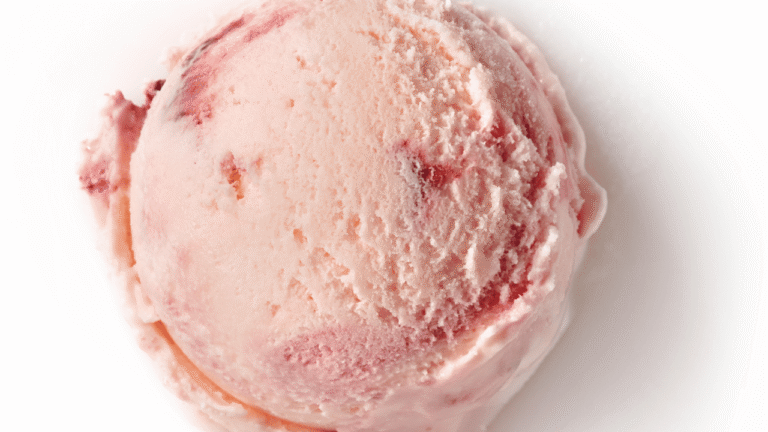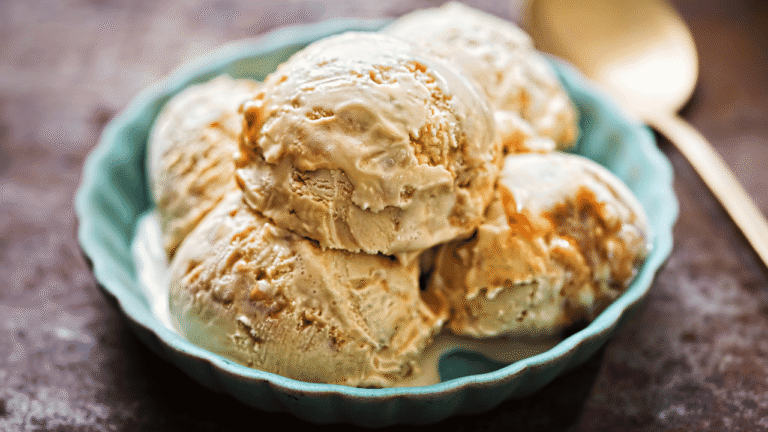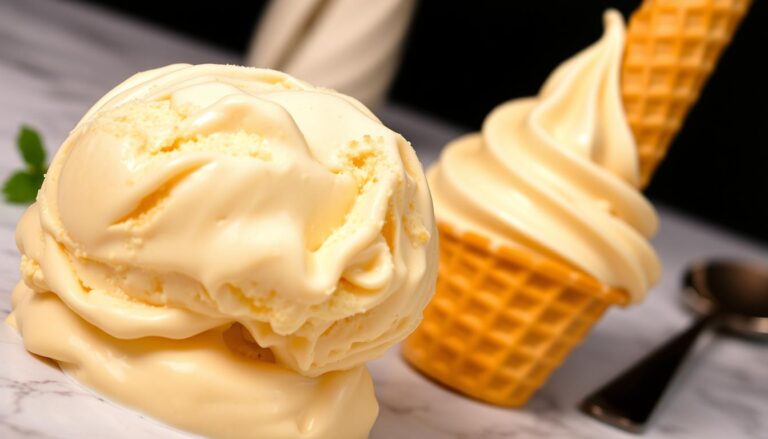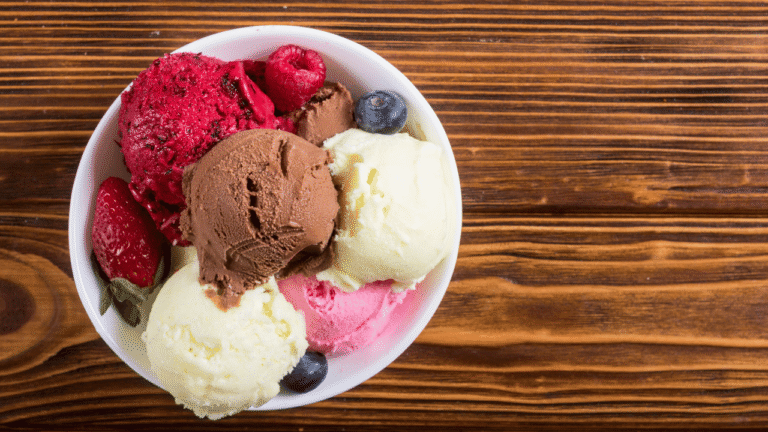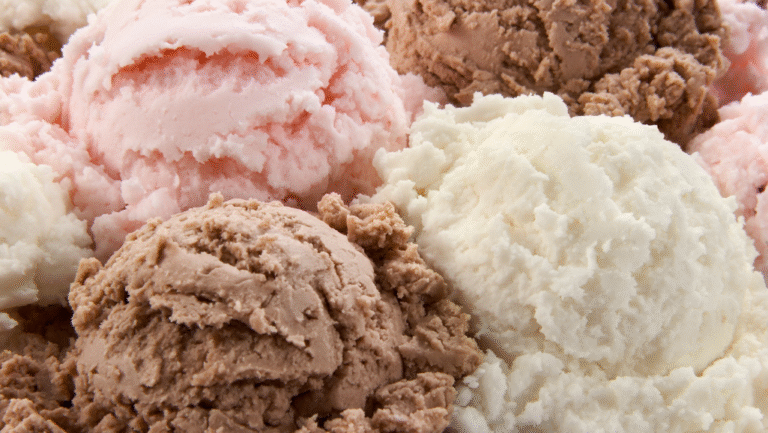Creating silky, smooth no cornstarch custard is not only possible but can result in a more authentic, rich dessert experience. Whether you’re avoiding cornstarch due to dietary restrictions or simply want to explore traditional custard-making techniques, this guide will walk you through everything you need to know about crafting delicious no cornstarch custard. From alternative thickeners to foolproof recipes and troubleshooting tips, you’ll soon be making perfect custard every time.
Key Takeaways: No Cornstarch Custard
No Cornstarch Needed – This custard relies on egg yolks (and sometimes whole eggs) as the thickening agent instead of cornstarch.
Creamy and Rich Texture – Achieves a smooth, silky texture through gentle cooking and tempering without needing starch.
Use Low Heat – Cooking over low heat prevents curdling and ensures the custard thickens slowly and evenly.
Tempering Is Key – Always temper the egg mixture by slowly whisking in the hot milk or cream to prevent scrambling the eggs.
Strain for Smoothness – Straining the finished custard removes any bits of cooked egg, ensuring a perfect, lump-free texture.
No Cornstarch Custard
4
servings10
minutes15
minutes200
kcalSmooth custard without cornstarch, perfect for desserts or a sweet treat.
Keep the screen of your device on
Ingredients
2 cups 2 milk
0.5 cup 0.5 sugar
4 large 4 egg yolks
1 teaspoon 1 vanilla extract
1 tablespoon 1 butter
1 pinch 1 salt
Directions
- In a medium saucepan, combine the milk and half of the sugar, then bring to a gentle simmer over medium heat.
- In a separate bowl, whisk together the egg yolks, remaining sugar, and salt until the mixture becomes pale and slightly thickened.
- Slowly pour the hot milk mixture into the egg mixture, whisking constantly to temper the eggs without cooking them.
- Return the mixture to the saucepan and cook over low heat, stirring continuously until the custard thickens and coats the back of a spoon.
- Remove the saucepan from heat and stir in the vanilla extract and butter, ensuring both are well incorporated into the custard.
- Pour the custard into individual serving dishes or a large bowl and let it cool to room temperature before chilling in the refrigerator.
Recipe Video
Nutrition Facts
- Serving Size: 1g
- Total number of serves: 4
- Calories: 200kcal
- Fat: 6g
- Saturated Fat: 3g
- Trans Fat: 0g
- Polyunsaturated Fat: 0g
- Monounsaturated Fat: 0g
- Cholesterol: 150mg
- Sodium: 70mg
- Potassium: 150mg
- Carbohydrates: 30g
- Fiber: 0g
- Sugar: 25g
- Protein: 6g
- Vitamin A: 500IU
- Vitamin C: 0mg
- Calcium: 100mg
- Iron: 1mg
Did you make this recipe?
Tag @https://www.instagram.com/ice_cream_haven/ on Instagram and hashtag it with #IceCreamIceCreamHavens
Like this recipe?
Follow @https://www.pinterest.com/Ice_Cream_Haven/ on Pinterest
Join our Facebook Group!
Follow https://www.facebook.com/icecreamhavens/ on Facebook
Why Cornstarch Is Commonly Used in Custards
Traditional custard has a rich, silky texture that can be achieved without cornstarch
Cornstarch has become a popular addition to modern custard recipes primarily because it provides a foolproof way to achieve thickness without the risk of curdling. When heated, cornstarch granules swell and gelatinize, creating a stable network that thickens liquids consistently.
However, traditional custard recipes relied solely on egg yolks for thickening. The proteins in egg yolks coagulate when heated, creating that characteristic creamy texture we associate with classic custard. While cornstarch offers convenience, it can sometimes mask the rich, natural flavor of a pure egg custard and create a slightly different mouthfeel.
Did you know? Classic French crème anglaise and traditional English custard were made for centuries without any starch thickeners, relying instead on the natural thickening power of egg yolks.
5 Alternative Thickeners for Custard
If you’re looking to make custard without cornstarch, several excellent alternatives can provide the thickness and stability you need. Each option brings slightly different properties to your custard, allowing you to customize based on dietary needs or desired texture.
Alternative thickeners offer different benefits for texture and flavor in custard
| Thickener | Measurement Equivalent | Best For | Flavor Impact | Special Considerations |
| All-Purpose Flour | 2 Tbsp flour = 1 Tbsp cornstarch | Traditional custards, winter desserts | Slight wheat flavor | Must be cooked thoroughly to remove raw flour taste |
| Arrowroot Powder | 1 Tbsp arrowroot = 1 Tbsp cornstarch | Dairy-free custards, clear sauces | Neutral | Creates glossy finish; don’t boil or it loses thickening power |
| Tapioca Starch | 1 Tbsp tapioca = 1 Tbsp cornstarch | Freezable custards, fruit fillings | Neutral | Creates slightly gel-like texture; freezes well |
| Rice Flour | 1.5 Tbsp rice flour = 1 Tbsp cornstarch | Gluten-free custards | Neutral | Needs to be cooked longer for full thickening power |
| Egg Yolks Only | 2-3 extra yolks per cup of liquid | Classic French custards | Rich, eggy | Requires careful temperature control to prevent curdling |
How to Use Alternative Thickeners
When substituting cornstarch with alternative thickeners, keep these tips in mind:
- Always mix your thickener with a small amount of cold liquid first to create a slurry
- Add the slurry to your hot mixture gradually while whisking constantly
- Cook flour-based thickeners thoroughly to remove any raw taste
- For egg-only custards, use a thermometer to ensure you don’t exceed 175°F (79°C)
- Consider the final serving temperature—some thickeners set differently when chilled
Classic Vanilla no cornstarch Custard

This classic vanilla custard relies on egg yolks for thickening
This traditional recipe creates a silky, rich custard using only egg yolks as the thickening agent. The result is a pure, authentic custard with deep vanilla flavor.
| Ingredients | Preparation Time | Cooking Time | Servings | Difficulty |
| 2 cups whole milk, 4 egg yolks, 1/2 cup sugar, 1 tsp vanilla extract, Pinch of salt | 10 minutes | 15 minutes | 4 | Medium |
Instructions
- In a medium saucepan, heat the milk until it’s steaming but not boiling (around 180°F).
- In a separate bowl, whisk together the egg yolks, sugar, and salt until pale and slightly thickened.
- Slowly pour about 1 cup of the hot milk into the egg mixture, whisking constantly to temper the eggs.
- Pour the egg mixture back into the saucepan with the remaining milk.
- Cook over low heat, stirring constantly with a wooden spoon, until the custard thickens enough to coat the back of the spoon (170-175°F).
- Remove from heat and stir in the vanilla extract.
- Strain through a fine-mesh sieve to remove any lumps.
- Pour into serving dishes and chill for at least 2 hours before serving.
Want to save this recipe for later?
Print this classic vanilla custard recipe to add to your collection.
Vegan Custard Without Cornstarch

This vegan custard uses coconut milk and agar-agar for a creamy texture
This plant-based custard achieves a wonderful creamy texture without eggs or cornstarch. Coconut milk provides richness while agar-agar offers reliable thickening power.
| Ingredients | Preparation Time | Cooking Time | Servings | Difficulty |
| 2 cups full-fat coconut milk, 1/3 cup maple syrup, 1 tsp agar-agar powder, 2 tsp vanilla extract, 1/4 tsp turmeric (for color) | 5 minutes | 10 minutes | 4 | Easy |
Instructions
- In a saucepan, combine the coconut milk, maple syrup, and turmeric.
- Sprinkle the agar-agar powder over the mixture and let it sit for 2 minutes to bloom.
- Heat the mixture over medium heat, whisking constantly.
- Bring to a gentle simmer and continue cooking for 5 minutes to fully activate the agar-agar.
- Remove from heat and stir in the vanilla extract.
- Pour into serving dishes and let cool to room temperature.
- Refrigerate for at least 2 hours until fully set.
- Serve with fresh fruit or a sprinkle of cinnamon.
“This vegan custard is so creamy, no one can tell it’s made without eggs or cornstarch. The agar-agar creates the perfect set while allowing the coconut flavor to shine through.”
— Sarah, Plant-Based Chef
Gluten-Free Custard with Rice Flour
This gluten-free custard uses rice flour as a thickening agent, creating a silky texture that’s perfect for those with gluten sensitivities. The recipe also works well with dairy-free milk alternatives.
| Ingredients | Preparation Time | Cooking Time | Servings | Difficulty |
| 2 cups milk (or almond milk), 3 egg yolks, 1/3 cup sugar, 2 Tbsp rice flour, 1 tsp vanilla extract, Pinch of salt | 10 minutes | 15 minutes | 4 | Medium |
Instructions
- In a small bowl, whisk together the rice flour with 1/4 cup of the cold milk until smooth.
- Heat the remaining milk in a saucepan until steaming but not boiling.
- In a separate bowl, whisk the egg yolks, sugar, and salt until pale and slightly thickened.
- Slowly pour about 1 cup of the hot milk into the egg mixture, whisking constantly.
- Pour the egg mixture and the rice flour mixture back into the saucepan with the remaining milk.
- Cook over medium-low heat, stirring constantly, until the custard thickens enough to coat the back of a spoon.
- Remove from heat and stir in the vanilla extract.
- Strain through a fine-mesh sieve for the smoothest texture.
- Pour into serving dishes and chill for at least 2 hours.
Tip: For a dairy-free version, substitute the milk with almond milk, oat milk, or coconut milk. Each will impart a slightly different flavor to your custard.
Troubleshooting no cornstarch Custard Texture Issues
Understanding common texture issues helps achieve perfect custard every time
Even experienced cooks occasionally encounter texture issues when making custard without cornstarch. Here’s how to identify and fix the most common problems:
Curdled or Lumpy Custard
This happens when eggs cook too quickly or the custard gets too hot.
Solution:
- Strain the custard through a fine-mesh sieve to remove lumps
- Use a blender to smooth out minor curdling
- Next time, use a thermometer and keep below 175°F
- Ensure you’re tempering eggs properly by adding hot liquid very slowly
Custard Too Thin
If your custard isn’t thickening properly, try these fixes:
Solution:
- Continue cooking a bit longer—thickening can take time
- Add an extra egg yolk (tempered first)
- For flour/starch thickeners, make sure they’ve been fully activated by heat
- Chill longer—many custards thicken significantly when cold
Skin Formation
That film on top of custard forms as it cools due to protein exposure to air.
Solution:
- Place plastic wrap directly on the surface of the custard while cooling
- Stir occasionally as the custard cools
- Some people enjoy the skin—it’s perfectly edible!
Weeping or Syneresis
When liquid separates from the custard, it’s called weeping or syneresis.
Solution:
- Avoid overcooking—this is often the main cause
- Don’t overmix after the custard has set
- Ensure proper cooling before refrigeration
- Gently blot any separated liquid with a paper towel
Important: The key to perfect custard is gentle, patient cooking. Rush the process, and you’re more likely to encounter texture problems. Low and slow is the way to go!
Nutritional Comparison of Custard Thickeners
The thickener you choose for your no cornstarch custard can significantly impact its nutritional profile. Here’s how the different options compare per serving (based on a standard custard recipe):
| Thickening Agent | Calories | Carbs | Protein | Fat | Dietary Considerations |
| Egg Yolks Only (2 extra) | +120 | +1g | +6g | +10g | Higher in cholesterol, richer flavor |
| All-Purpose Flour (2 Tbsp) | +50 | +11g | +1.5g | +0g | Contains gluten, not suitable for gluten-free diets |
| Arrowroot (1 Tbsp) | +30 | +7g | +0g | +0g | Gluten-free, easily digestible |
| Rice Flour (1.5 Tbsp) | +40 | +9g | +0.5g | +0g | Gluten-free, slightly gritty if not fully cooked |
| Tapioca Starch (1 Tbsp) | +35 | +8g | +0g | +0g | Gluten-free, slightly chewy texture |
| Agar-Agar (1 tsp) | +5 | +0.5g | +0.5g | +0g | Vegan, high in fiber |
Health Considerations
When choosing a thickener for your custard, consider these health factors:
- Egg yolks provide the most traditional flavor but add cholesterol and fat
- Plant-based thickeners like arrowroot and agar-agar are suitable for vegan diets
- Rice flour and tapioca starch are excellent for gluten-free needs
- All starch-based thickeners add carbohydrates to the final dish
- For lower-calorie options, agar-agar provides thickening with minimal caloric impact
Frequently Asked Questions
Can I substitute cornstarch with the same amount of flour?
No, you’ll need approximately twice as much all-purpose flour as cornstarch to achieve the same thickening power. For example, if a recipe calls for 1 tablespoon of cornstarch, use 2 tablespoons of all-purpose flour instead.
Why did my egg-only custard curdle?
Egg custards curdle when they’re heated too quickly or to too high a temperature. Always cook egg custards over gentle heat and use a thermometer to ensure you don’t exceed 175°F (79°C). Proper tempering of eggs by slowly adding hot liquid is also crucial.
Can I make custard with almond milk?
Yes, almond milk works well in custard recipes. Since it’s thinner than dairy milk, you might need to use slightly more thickener or reduce the total liquid. The flavor will be lighter, with a subtle nuttiness that complements vanilla beautifully.
How long will homemade custard keep in the refrigerator?
Homemade custard typically keeps for 3-4 days in the refrigerator when stored in an airtight container. Place plastic wrap directly on the surface of the custard to prevent a skin from forming during storage.
Can I freeze custard made without cornstarch?
Custards thickened with egg yolks alone don’t freeze well as they tend to separate when thawed. Custards made with tapioca starch freeze better than other varieties. If you must freeze custard, whisk it vigorously when thawing to help restore its texture.
What’s the difference between custard and pudding?
The main difference is in the thickening agent. Traditional custard is thickened primarily with eggs, while pudding typically relies on starch (like cornstarch). Custard tends to have a richer, more delicate texture due to the eggs, while pudding is often firmer and more stable.
Want More Delicious Dessert Recipes?
Subscribe to our newsletter for weekly dessert inspiration, including more cornstarch-free recipes!
Conclusion
Making no cornstarch Custard without cornstarch opens up a world of authentic flavors and textures that harken back to traditional dessert-making. Whether you choose to rely solely on eggs for thickening or experiment with alternative starches like arrowroot or rice flour, you now have the knowledge to create smooth, delicious custards tailored to your dietary needs and flavor preferences.
Remember that successful custard-making is all about patience and attention to detail. Take your time, monitor temperatures carefully, and don’t be discouraged if your first attempt isn’t perfect. With practice, you’ll soon be creating restaurant-quality custards that will impress family and friends alike.
We’d love to hear about your experiences making custard without cornstarch! Which alternative thickener worked best for you? Did you discover any special techniques that helped achieve the perfect texture? Share your successes and even your learning experiences in the comments below.
FAQ
What is no cornstarch custard?
No cornstarch custard is a traditional custard thickened using egg yolks (and sometimes whole eggs) rather than cornstarch. It’s often richer, silkier, and has a more classic custard texture and flavor.
How is it thickened without cornstarch?
The custard thickens as the proteins in egg yolks coagulate when gently heated. Slow cooking and constant stirring are key to preventing curdling and achieving a smooth, thick texture.
Can I use flour instead of cornstarch?
Yes, but if you’re aiming for a no-starch custard, flour is also a starch. Stick to egg yolks for thickening if you want a starch-free version. However, some recipes may use flour for added structure if needed.
Why does my custard curdle or scramble?
This usually happens when the heat is too high or the custard is cooked too quickly. Always cook over low to medium-low heat and stir constantly. Using a double boiler can help prevent overheating.
Can I make it dairy-free?
Yes! You can use non-dairy milks like almond, coconut, or oat milk, but be aware that the taste and thickness may vary slightly. Full-fat coconut milk works best for a creamier texture.
How do I know when it’s done cooking?
The custard is done when it thickens enough to coat the back of a spoon and a finger swiped across the spoon leaves a clear line. The temperature should reach around 170–175°F (77–80°C) for safe thickening.
Can I make it ahead of time?
Yes. Once cooked, let it cool slightly, then cover with plastic wrap touching the surface to prevent a skin from forming. Chill in the fridge for up to 3 days.
Why is my custard runny?
It likely wasn’t cooked long enough or didn’t reach the right temperature. Egg yolks need to be heated gradually and held at temperature long enough to set.
Can I use whole eggs instead of just yolks?
You can, but yolks provide more richness and better thickening. Using whole eggs results in a lighter custard, and you may need to adjust the cooking time slightly.
Is this the same as crème anglaise or pastry cream?
No cornstarch custard is closer to crème anglaise, which is a pourable custard. Pastry cream includes cornstarch (or another thickener) and is thicker, used for fillings.








